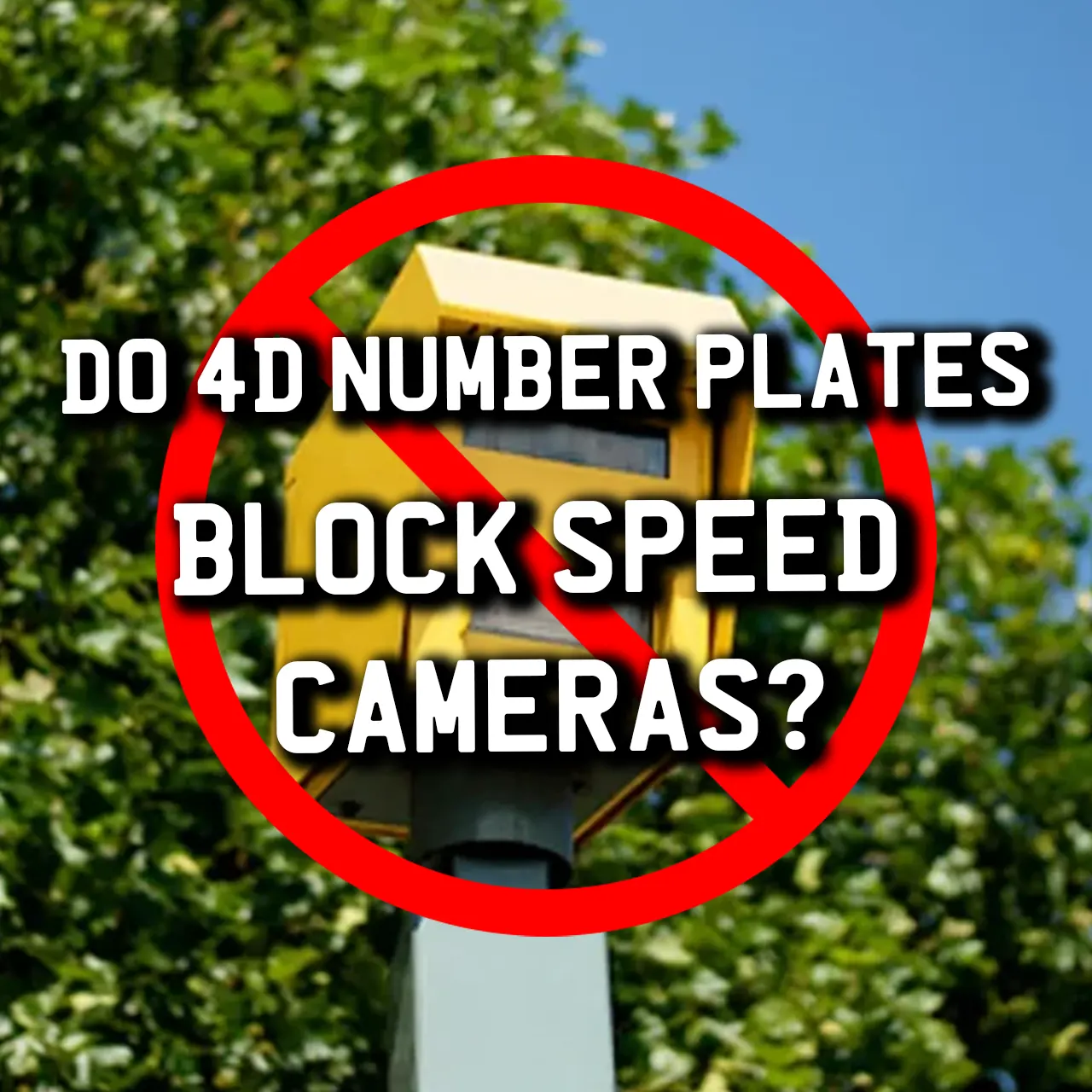4D number plates have been on the market for around 4 years and have become popular in the car scene. Their popularity is still growing.
Not everyone who buys 4D plates does so for the aesthetics, though. Some people are under the impression that if they install some 4D number plates on their car, they will become invisible to ANPR cameras!
But is that true? Do 4D plates block ANPR cameras and prevent you from being fined or charged in congestion zones? That’s the question I will be answering in this article. This article will cover how 4D plates appear in the infrared, 4D plate materials, ANPR systems and various techniques that stop them from functioning.
ANPR Cameras – Is There A Problem Here?
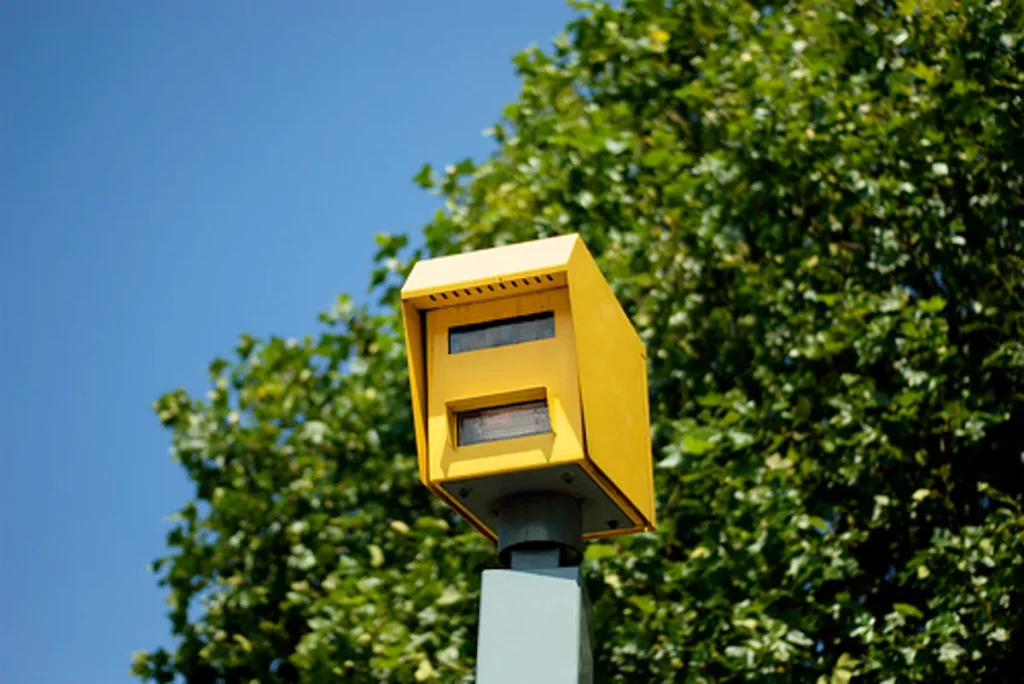
ANPR means Automatic Number Plate Recognition. They are systems that pick up your vehicle details automatically using a combination of camera, software, and database technologies.
ANPR cameras have become ubiquitous – and I’m not just talking about the big yellow Gatso cameras, but the ones on motorway gantries, on police cars and mobile speed camera vehicles, on roadsides across the country measuring traffic flow, in car parks, average speed camera networks, and in many more places.
Brief Overview of How ANPR Works
ANPR systems use a combination of several technologies to read your number plates.
📷 First is the camera. Almost any camera will do the job, but most applications will require specific capabilities such as dual night/day modes.
💿 Next is a software application that performs several jobs. The software system must:
- Receive a photo of your vehicle.
- Locate the plate and isolate it.
- Adjust the image properties such as exposure, brightness, and contrast to further isolate the registration marks.
- Use optical character recognition (OCR) algorithms to read the characters and digitise them.
🖥 Finally, a database lookup is performed where your registration marks are passed to an additional software system that performs a lookup and passes back the details of the vehicle.
Now the operator can do something with the data, like issue a parking charge or send a fine.
ANPR Anomalies – Problems In Reading
The technology isn’t fool-proof, and sometimes an ANPR system won’t be able to read your plates. This can happen for many reasons, including:
- Glare and bright lights.
- Dirt on the vehicle obscuring the number.
- Poor lighting conditions.
- Objects obscuring the vehicle.
- Harsh weather conditions such as fog or heavy rain.
- Non-standard fonts.
- Incorrectly positioned screws or bolts that may change the appearance of the characters.
There are rules and regulations in place that control a number plate’s size and font style. The rules require use of the Charles Wright font, which has fixed dimensions and spacing – this is to standardise number plates and enable cameras to consistently read a vehicle’s registration number.
The problems listed above are common to all plate types, including 4D plates.
Can You Even Block ANPR Cameras?
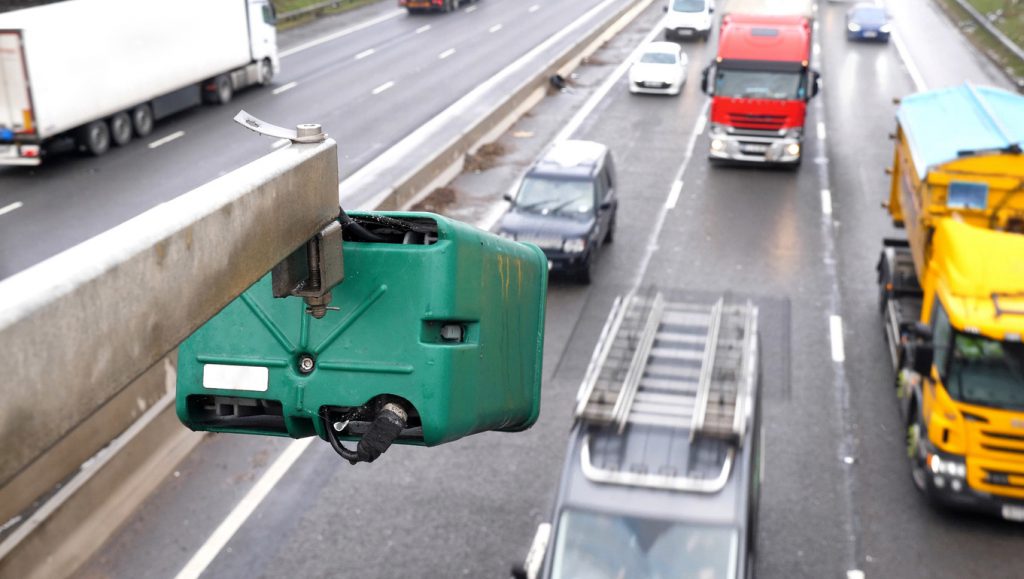
So, if you’re thinking of buying some 4D plates to block ANPR cameras, think again – this is definitely not the way to go!
ANPR systems are not all alike and there is no standard system in place across the country. A specific system (such as the motorway speed camera network(s)) may all use the same cameras and software, but as previously mentioned, there are myriad systems in place all using different cameras and software, all operating in varying conditions.
Furthermore, the method by which you would “block” a camera would depend on the reason you wanted to block it in the first place. Remember, they do not all use the same technologies.
Let’s have a look at some of the ways in which ANPR systems can be “blocked”.
Blocking Speed Cameras with Radar and Laser Jammers
Many red light and speed cameras use radar to detect how fast your vehicle is travelling, so putting a radar jammer in your boot could thwart the system.
The same is true for laser jammers. And while it is not illegal to own a radar or laser jammer, using them to block speed cameras most certainly is. The actual crime committed is obstructing the course of justice and will land you with a hefty fine when caught.
There are examples of custodial sentences being handed out to people using radar jammers for this purpose, and you’ll more than likely lose your license for a fixed period.
Speed cameras also have a second method for speed detection. The systems are designed to take two photos of your vehicle at a fixed amount of time apart. On the road surface you will notice white horizontal lines that are parallel to the camera. These lines are a fixed distance away from one another, so it is possible to determine how far you have travelled (and thus how fast you were travelling) between the first and second photos.
Some systems can detect the use of a jammer and alert the camera operator to suspicious activity. Jammers also do nothing to interfere with the camera itself, which could be recording everything.
The bottom line: not worth it.
Blocking Infrared Light to Prevent Fines & Charges
While a jammer interferes with the camera’s speed detection system, it does nothing to stop the camera reading your number. We already know many ANPR systems operate in the infrared, so perhaps we can block infrared light by coating the whole plate in an IR blocking material?
This technique can be effective and could prevent you from being fined or charged in certain areas or at certain times of day. At night, ANPR systems must use infrared, so an IR blocking material could prevent the camera’s infrared lights from illuminating your plates to a sufficient level for reading.
However, it’s important to remember that many ANPR systems use both visible light and infrared cameras and can switch between them automatically. Blocking infrared does nothing to prevent visible light cameras reading your digits during the day – and to block visible light you need a physical barrier between camera and plate.
As before, when ANPR systems detect a fault, they can and do alert the network operator to a problem. A manual reviewer may well be able to make out your number plate and issue a fine.
Blocking infrared light to interfere with a camera is illegal and is in breach of section 11 of The Road Vehicles (Display of Registration Marks) Regulations 2001. You can be fined up to £1,000 for displaying number plates that do not comply with regulations.
The bottom line: not worth it.
Use Bright Lights to Over-Expose the Camera
Another way you can prevent an ANPR system from reading your number plate is to use very bright lights positioned directly above or below your plate.
This is something you may have even seen yourself – a vehicle installed with very bright LED strips right below the plate. This could in theory over-expose a camera’s light sensor and prevent the camera from taking an image of the plate.
At night this method may become ineffective unless the LEDs can also switch to infrared mode. Over-exposure can also be prevented or reduced by the camera operator when they install and configure their systems. Aperture, ISO, and shutter settings as well as filters can prevent over-exposure.
Again, it’s also illegal – and not just for blocking a camera – but according to rule 114 of the highway code you “must not use any lights in a way which would dazzle or cause discomfort to other road users, including pedestrians, cyclists and horse riders”. They’re also conspicuous, which could attract the attention of the police.
The bottom line: not worth it.
Block Infrared Cameras with Reflective Characters
Finally, another way to block an infrared camera is to make your characters reflective. By doing this, the characters and the reflective backing plate will have little or no contrast in the infrared wavelengths, making it very difficult for the software to isolate the digits.
For the camera’s software to read the characters, it relies on detecting differences in brightness between the characters and their background. Reflective digits reduce the contrast between themselves and the reflective backing plate. With little or no contrast between them, the software processing the image will have difficulty isolating the individual characters.
This method won’t work with visible light cameras either and is also conspicuous and likely to attract the police.
The bottom line: not worth it.
Conclusion
We receive many e-mails from drivers across the country looking for some “invisible” number plates. More often than not they’re taxi drivers who don’t want to pay congestion fees or parking charges and are looking for a quick & easy way to get away without paying.
The methods outlined above are ultimately ineffective at helping criminals “get away” with charges. While some techniques may work in specific circumstances, no single method can defeat all ANPR systems because there is no standardised system in place. Additionally, cameras operated by the authorities (such as speed cameras and congestion zone cameras) have built-in measures to detect evasion and trigger manual review of the footage or images.
Furthermore, the penalties for attempting to interfere with these cameras can be severe and aren’t worth the risk. Displaying illegal number plates can land you with a fine of up to £1,000. But interfering with enforcement cameras is obstructing the course of justice, which could land you in serious trouble. Some of these methods will cost you your driver’s license and all of them will cost you a fine of up to £1,000 when you’re caught. The charge of obstructing the course of justice could result in even bigger fines being handed out, and for repeated offences you risk being imprisoned and having your registration number revoked by DVLA.
The bottom line: it’s definitely not worth it!
Under The Lens: Let’s Go Infrared!
To help understand the points above, we can demonstrate some of them by taking photos in infrared so we can see how the camera and number plates behave.
The camera I am using is sensitive to light between 720 nm and 1,150 nm and has an 18-55 mm lens.
The light source is emitting light at 850 nm. This wavelength is compliant to the British standard which requires all number plates to be tested at 850 nm.
To begin with, let’s see what a normal printed plate looks like in infrared:
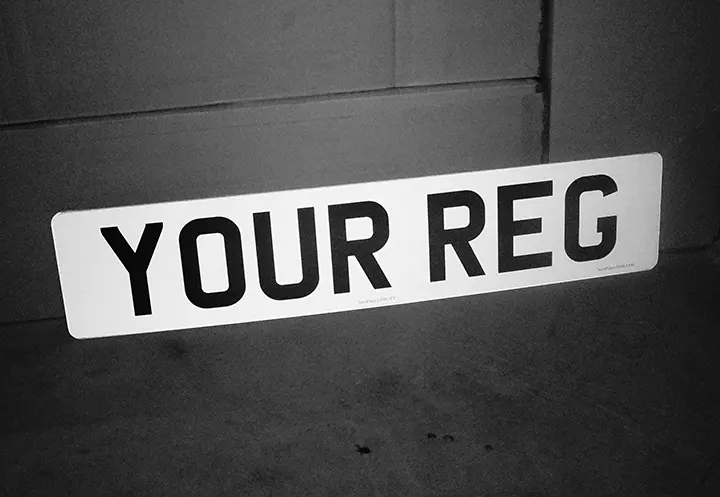
The main observations include:
- The background is highly reflective because of the backing film used in the construction of the plate.
- The characters are very dark black.
- There is a high contrast ratio between the backing plate and the characters which makes them sharp and crisp.
These printed plates are the standard plate style seen on the vast majority of cars in the UK and comply fully with the standards – including the infrared test requirements.
Setting the Standard with Printed Plates – Our Control Test
While this isn’t a compliance test in a controlled environment, I can easily demonstrate how to check a number plate for infrared compliance.
In basic terms, the greyscale values of the reflective background and the characters must fall within certain levels.
Greyscale just means shades of grey from white to black and is measured on a scale of 0-255. 0 is fully white and 255 is fully black. A greyscale colour chart looks like this:
To do the test, we need to check that the background has an average greyscale value of 225 or more for a given test area. The characters must have an average greyscale value of 25 or less. These values ensure a bright background and dark characters – easy for ANPR cameras to read.
In a lab test environment, this would be displayed on a live histogram connected to a camera, but this isn’t a controlled test, so we must view those values another way.
In Photoshop we can use the eye-dropper tool to check the RGB values for a range of pixels inside a sample area of 250×250 pixels.
Using the same photo, the average RGB (red, green, blue) value of a selected spot on the background is 228 – this is the same as a greyscale value of 228. In black and white images, the RGB values always match (because there’s no colour), so we can use them as a proxy to greyscale.
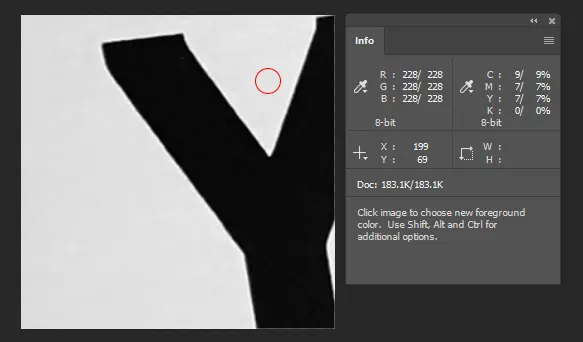
For the characters, the average was 8 – below the required 25.
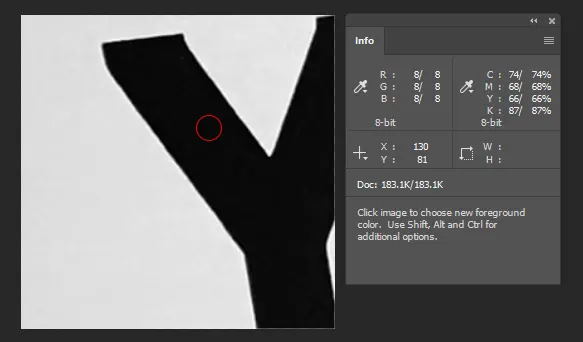
4D Plates in Infrared
Let’s look at the same data for a 4D plate using acrylic digits. Here you can see a very promising first glance. There’s great background reflectivity, nice dark characters, and a very sharp contrast between them.
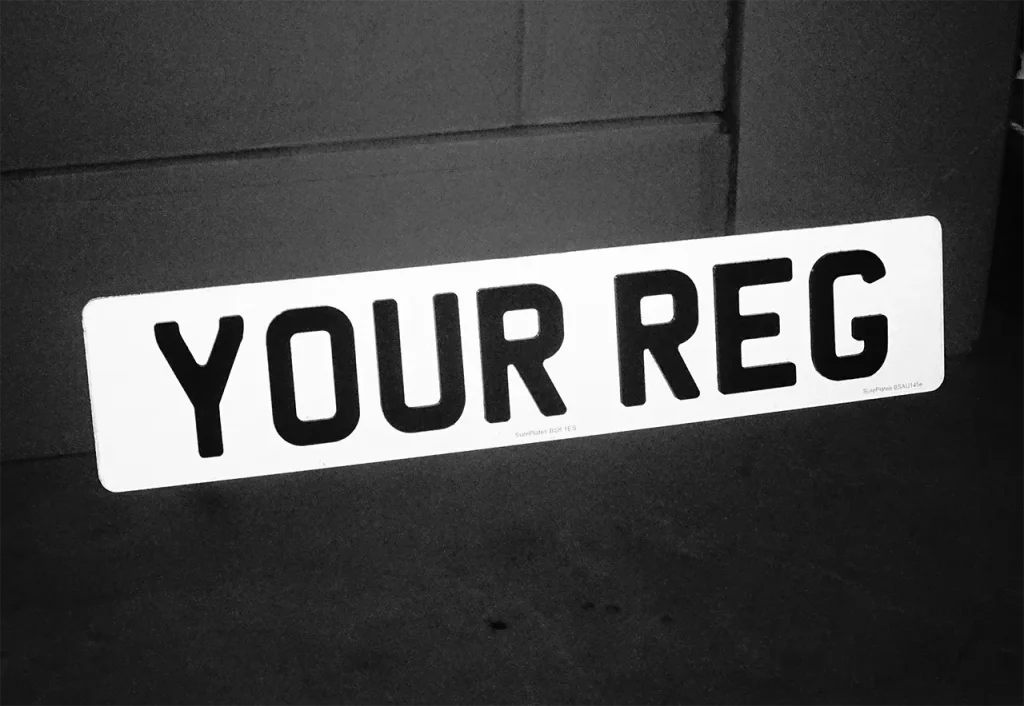
It might look good, but we need to make sure the values are within the accepted ranges, otherwise the plate is deemed to have failed the test for infrared compliance.
As it turns out, the background has a greyscale value of 250. Very nice.
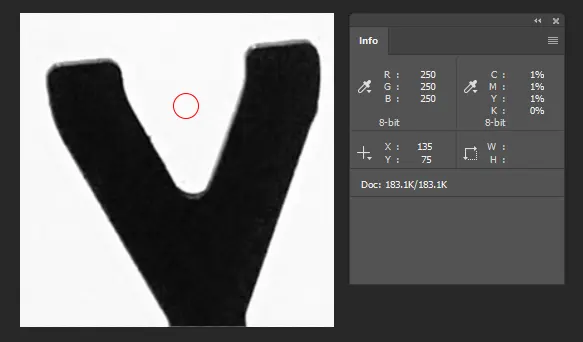
The character has a greyscale value of 14. Well below the allowed 25.
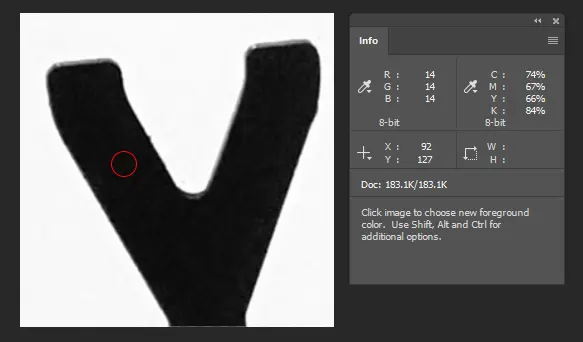
In addition to testing these specific greyscale values for the background and black digits, the test also requires that an additional component be checked. We must calculate the difference in greyscale values between the background and the black digits. That difference must be greater than 200.
For the printed plates photo, that’s 228 (white) – 8 (black), equalling a difference of 220. For our 4D test, it’s 250 (white) – 14 (black), equalling 236 – an even better result!
Of course, this isn’t a controlled lab test and doesn’t follow the exact requirements of the infrared test, so the real-world figures are slightly different. Suffice it to say, we have performed the test in a controlled environment and 4D number plates passed the infrared component of the standard.
Caught in Camera Glare – A Possible Cause of Misreading
Let’s now have a look at one way a number plate can fail on an ANPR camera. I’ve turned my lights up to maximum intensity and adjusted the camera angle to cause both camera glare and reflection. Black glossy acrylic will reflect some of the light (though it won’t be retro-reflection) and the brightness of the lights is causing glare.
Here’s a photo of how that appears:
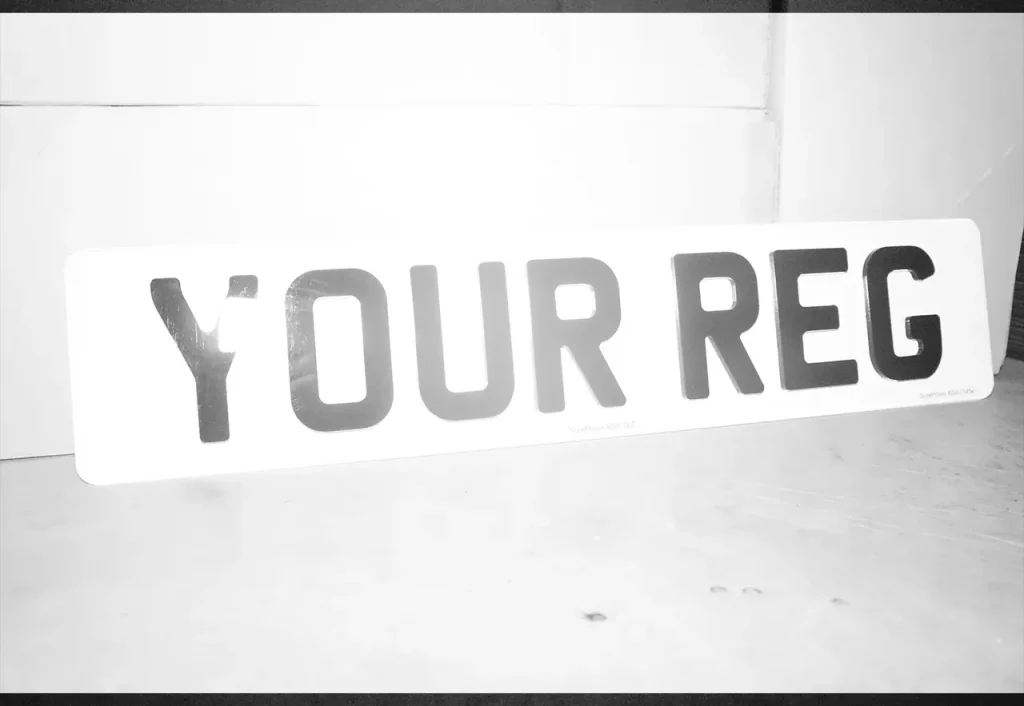
Even after adjusting exposure and offset settings like an ANPR system, the resulting image still fails the infrared test as there is too much brightness focussed on certain characters:
Here’s the adjusted image:
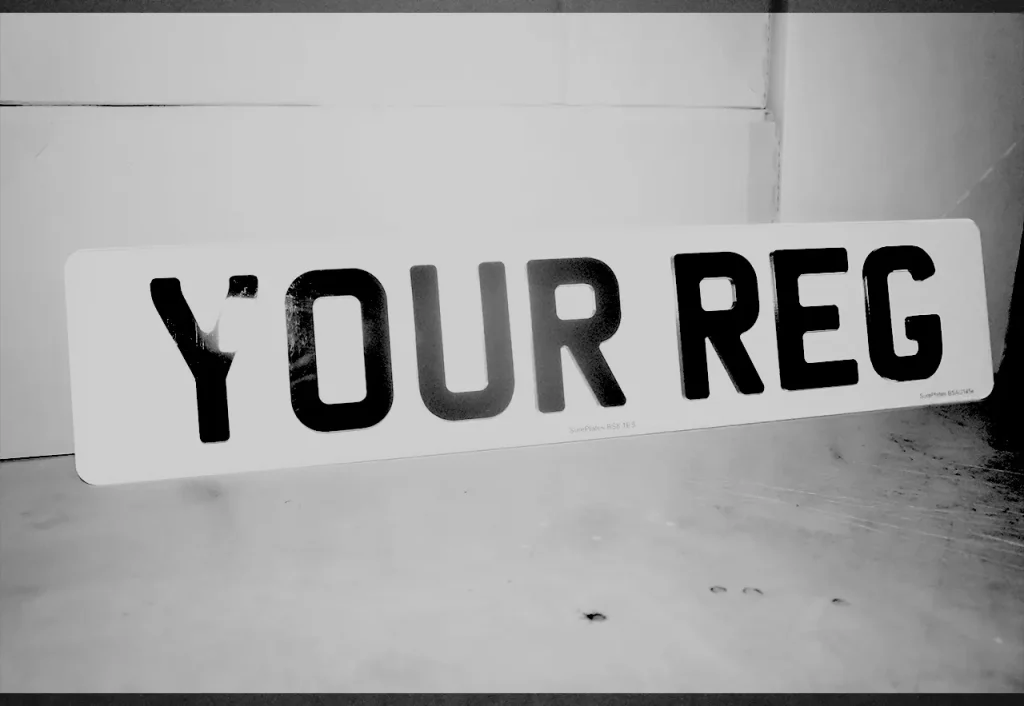
The reflecting light on the letter ‘Y’ cannot be removed by automatic image adjustments because the sensor has been maxed-out. In other words, there’s no image data there – it’s just white pixels.
Now, before you jump to any conclusions, let’s do the same test with a standard printed plate in the name of fairness:
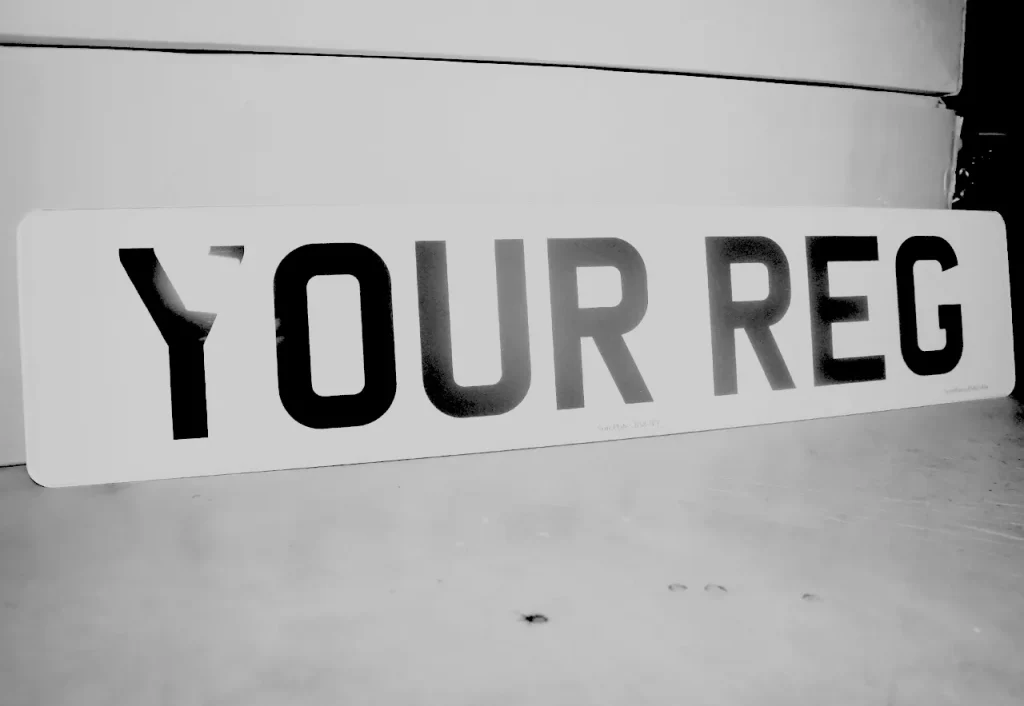
It’s exactly the same result – missing data due to a maxed-out camera sensor and characters that fail the brightness checks.
So, what can we learn from these little tests? Basically, we know the following:
- 4D number plates with acrylic digits are roughly equal to regular printed number plates in terms of black/white values.
- 4D plates pass the infrared component of the British standard.
- Both printed and 4D plates can be affected by camera glare and very bright reflected lights.
Conclusion
Firstly, we know for certain that 4D plates are compliant to the IR requirements in the British standard. Acrylic digits are no less readable than printed digits and they do not cause inappropriate glare or reflections.
Second, the issue of glare or reflection is not a problem unique to 4D plates – standard printed digits can also glare and reflect to cause a mis-read. In the real world, infrared lights are not necessarily positioned the way I have done so here. I have purposely closed in on the plates with very bright lights to cause this result.
Materials: Is Acrylic the Right Choice?
The most common material used to make 4D number plate characters is acrylic, but other materials can be used. Aluminium is one such material, but it’s more expensive to process. Other thermoplastics such as polypropylene can also be used, but other considerations preclude their use.
| Material | Cost per m2 | Can be laser cut (CO2 laser) | Edge quality after cut | UV resistance (fading) | IR blocking? |
| Acrylic | From £20 | ✅ | Excellent | Excellent UV resistance (for UV stabilised acrylic) | ✅ |
| Polypropylene | From £15 | ✅ | Fair | Excellent UV resistance | ✅ |
| ABS Plastic | From £20 | ❌ | – | Good UV resistance | ✅ |
| PET Plastic | From £20 | ✅ | Poor | Good UV resistance | ✅ |
| Thin polycarbonate (1 mm only) | From £15 | ✅ | Poor | Does not fade | ✅ |
| Aluminium | From £30 | ❌ | – | Does not fade | ✅ |
As you can see, acrylic ticks all the boxes when it comes to material choice from a manufacturing point of view. It’s cheap, can be laser cut with a CO2 laser, and has an excellent finish (that means the cut edges are sharp and polished, not melted or burred). Aluminium can also be laser cut, but you normally need a much more expensive fiber laser cutter to do it.
ABS plastic cannot be laser cut because it produces carcinogenic fumes.
“IR Blocking” refers to the material’s ability to block infrared light from passing through itself, a property which is desirable – we want the infrared light to be blocked, not reflected or transmitted. When a material is transmitting in the infrared, it lets infrared pass through itself and is essentially invisible in those wavelengths.
In Conclusion
The answer then, is an emphatic “NO!” – 4D number plates do not block ANPR cameras and should not be used for this purpose. 4D plates are an aesthetic upgrade, nothing more.
Furthermore, while there are many tactics that can be deployed against ANPR cameras, there are no methods that work in all conditions for all systems. You cannot reliably block them, nor should you attempt to do so as even the attempt can land you with a hefty fine and a driving ban. Many camera systems are in place for public safety (such as speed cameras), so interfering with them could be considered a threat to the public. A review by the Cochrane Database of Systematic Reviews found that speed cameras reduced the number of collisions and injuries on the roads where they were installed by 8-49%.
4D number plates are as visible in infrared as printed plates (the standard plate style in the UK) and do not interfere with infrared light. They do not reflect infrared any more than printed plates and they don’t cause any additional glare.
Acrylic is the obvious choice for making 4D digits because it’s cheap, easy to work with, provides an excellent finish, is UV resistant, and is IR blocking (this is desirable for readability).
The main takeaway here is that 4D plates do not pose a significant challenge to ANPR cameras.
